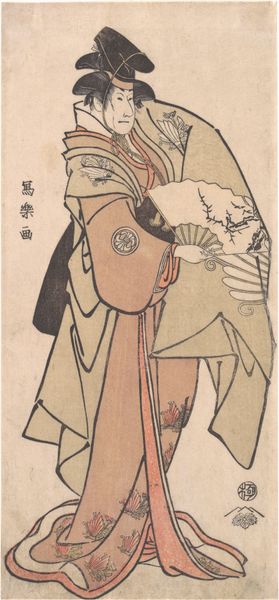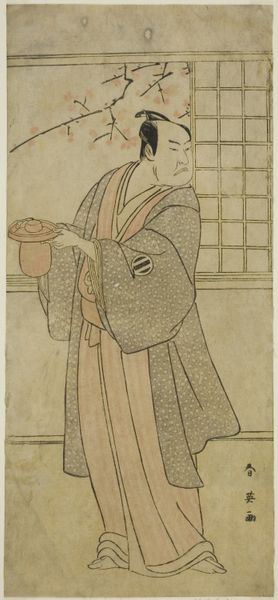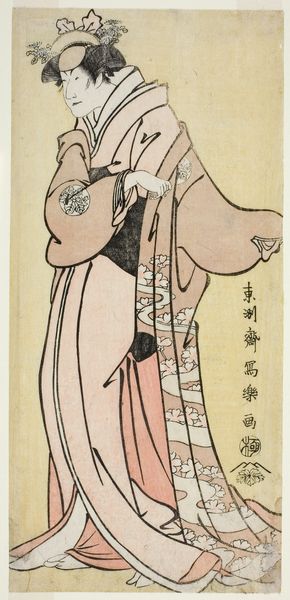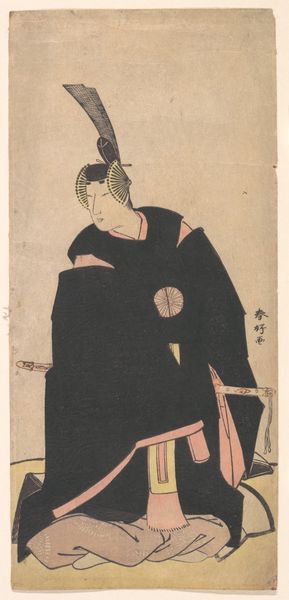
The Koya Jewel River (Koya no Tamagawa), from the series "Six Jewel Rivers in Popular Customs (Fuzoku Mu Tamagawa)" c. 1769 - 1770
0:00
0:00
# print
#
asian-art
#
landscape
#
ukiyo-e
#
figuration
Dimensions: 27 1/2 × 4 7/8 in.
Copyright: Public Domain
This print of "The Koya Jewel River" was created by Suzuki Harunobu in Japan, and it's part of a series that playfully connects famous rivers with contemporary customs. Here, Harunobu uses the imagery of the Koya River to comment on the social structures of his time. Note how he depicts a courtesan dressed in elegant robes, standing by the river. This image isn't just a pretty scene; it's loaded with cultural references. Jewel rivers were often used in classical poetry as metaphors for longing and beauty. By placing a courtesan within this setting, Harunobu is making a statement about the transient nature of beauty and the commodification of desire within the pleasure districts of Edo-period Japan. Understanding this artwork fully requires delving into the social history of Japan during the 18th century, researching the role of courtesans, and exploring the significance of classical literature in popular culture. Through careful study, we can reveal the complex layers of meaning embedded in this seemingly simple image.
Comments
No comments
Be the first to comment and join the conversation on the ultimate creative platform.













